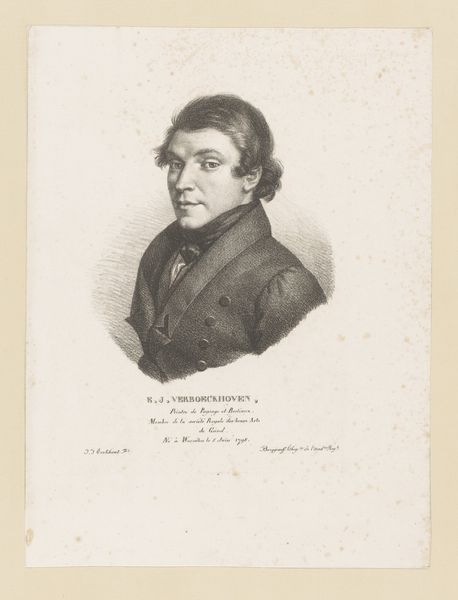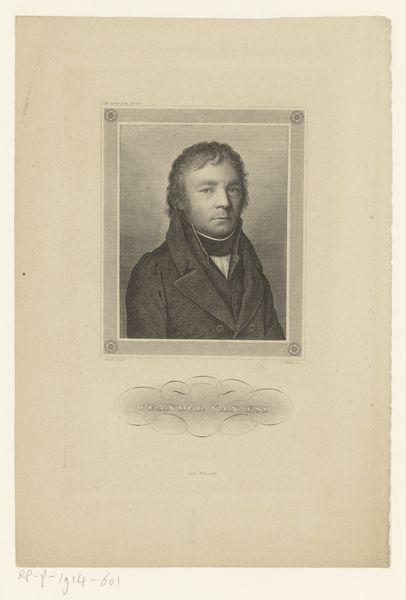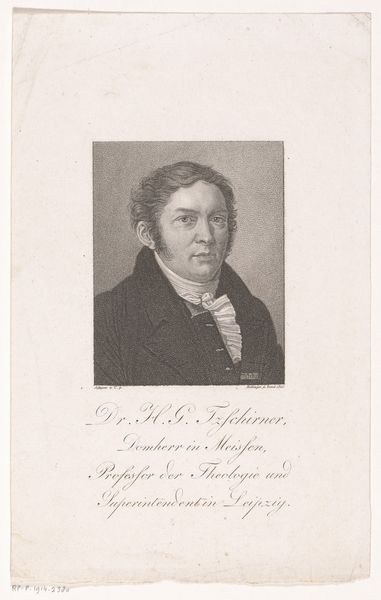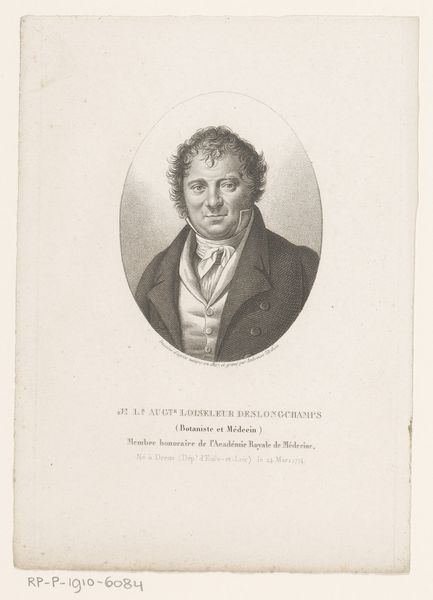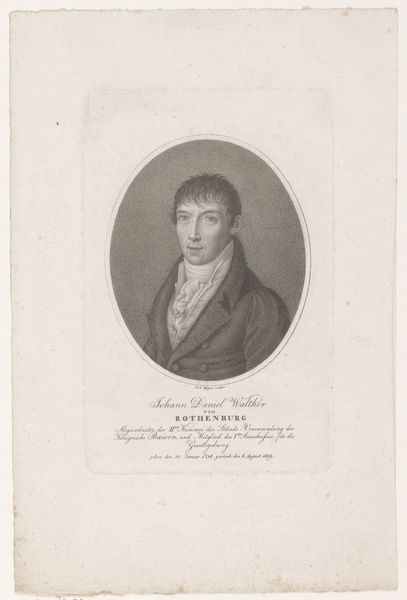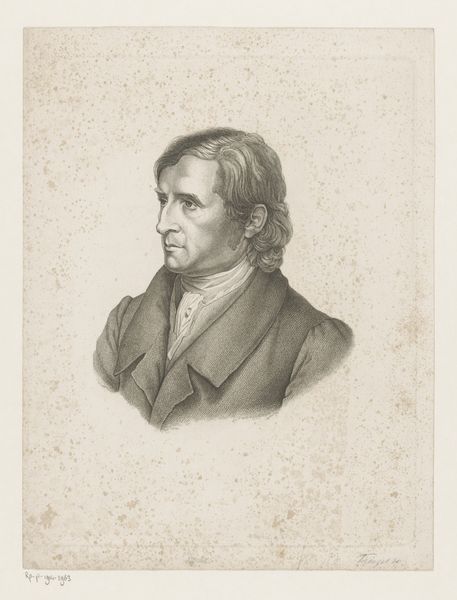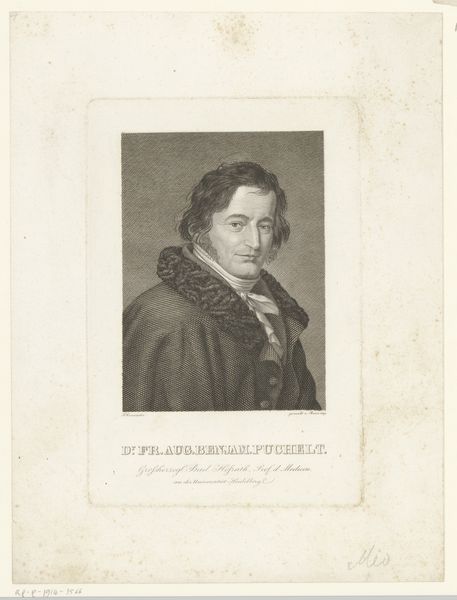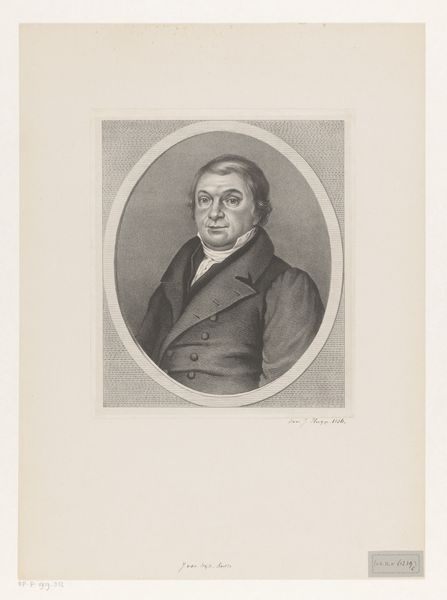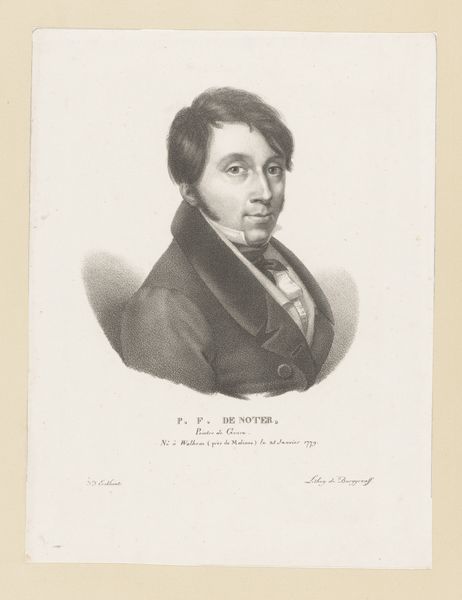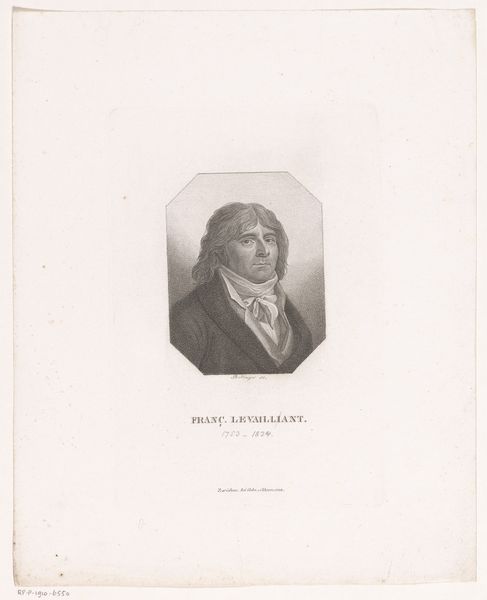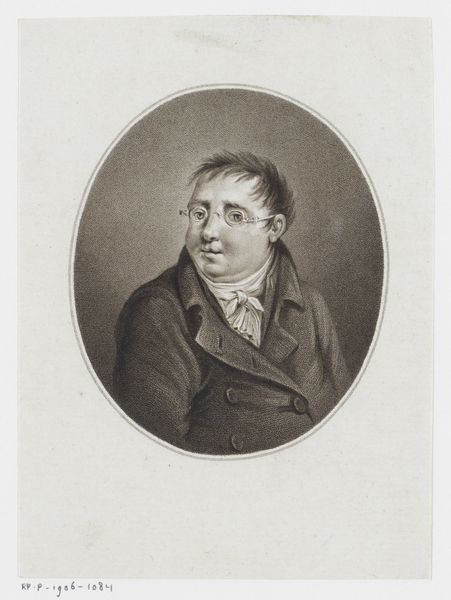
print, engraving
#
portrait
#
pencil drawn
#
neoclacissism
# print
#
engraving
#
realism
Dimensions: height 202 mm, width 108 mm
Copyright: Rijks Museum: Open Domain
This is Anton Wachsmann's portrait of Carl Friedrich Wiebeking, an engraving made sometime in the late 18th or early 19th century. Encased in an oval frame, the portrait evokes classical portraiture, yet is also a window into the burgeoning world of civic engineering. Consider the oval frame itself. It descends from ancient Roman portraiture, where emperors were often framed in a similar fashion, symbolizing authority and permanence. Yet here, it houses a figure of the Enlightenment – a surveyor of rivers, a builder of infrastructure. We see a meeting of epochs, each leaving its mark on the other. The very act of framing Wiebeking in this manner suggests a desire to ennoble his profession, raising it to the level of classical virtues and civic duty. Even today, the sight of an engineer inspires a peculiar blend of trust and awe, a psychological residue perhaps from the age when their knowledge seemed almost magical in its power to reshape the world. This portrait, therefore, is not just an image of a man, but a potent symbol of human ambition and progress.
Comments
No comments
Be the first to comment and join the conversation on the ultimate creative platform.
